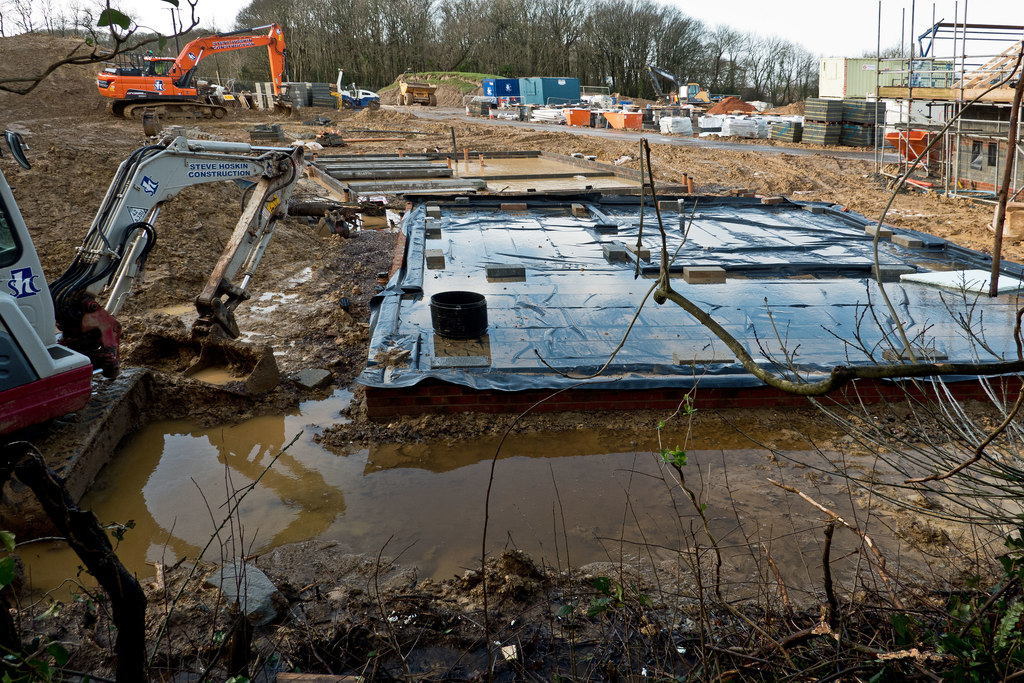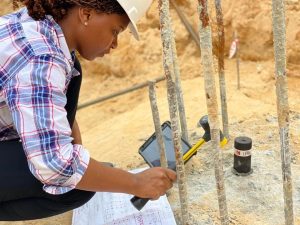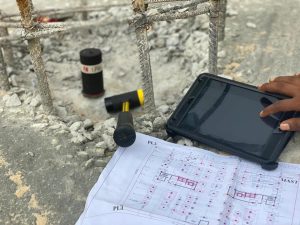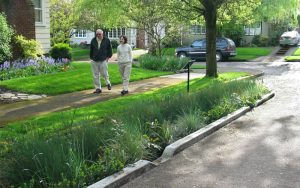When planning to develop lands with swampy soils, one of the most important decisions you’ll make is selecting the right foundation. Swampy soils behave differently from dry ones, they have higher pore water pressure, lower shear strength, and unpredictable settlement. Your foundation needs to handle these challenges to prevent structural failure or long-term damage.
Why swampy soils are difficult to build on
Before looking at foundation types, it’s important to understand why swampy soils present a problem:
- High water table and saturation: The soil pores are filled with water, which reduces its load-bearing capacity.
- Settlement over time: Swampy soils compress slowly, so settlement can continue long after construction.
- Soft and compressible layers: Clays, silts, and organic soils common in swamps easily deform under load.
- Instability and uplift: Water pressure can push upward or erode the soil below foundations.
- Uneven settlement: Different parts of a foundation may settle unevenly, causing structural cracks.
These issues make simple shallow strip foundations unsuitable unless engineers first improve or reinforce the soil.
Foundation types suitable for swampy soils
Here are the main foundation types commonly used in swampy soils and how they perform.
1. Deep foundations (piles or drilled shafts)
Pile foundations are the most common choice when the upper layers of swampy soil are too weak. Piles transfer the load from the structure through the soft soil to a deeper, stronger layer. You can make them from concrete, steel, or timber, and drive or bore them into the ground.
Drilled shafts or caissons are large-diameter foundations used for heavy loads. They reach stable soil or rock and provide a strong base, even in areas with high groundwater.
Advantages:
- Reach stable soil layers below weak ground.
- Provide reliable support for heavy structures.
- Perform well in areas with high groundwater levels.
Limitations:
- Costly compared to shallow foundations.
- Require specialized equipment and expertise.
- Construction can be difficult in very deep or highly variable swampy soils.
2. Mat (raft) foundations
A mat or raft foundation spreads the structure’s load over a large area, reducing the pressure on swampy soil. It is often used where the bearing capacity of the surface soil is low but uniform. Stiffening beams or ribs can be added to increase strength.
Advantages:
- Reduces differential settlement since the load is distributed evenly.
- Easier to construct than deep foundations.
- Suitable for buildings with moderate loads.
Limitations:
- Not ideal for very soft or highly compressible soils.
- Settlement may still occur if the swampy soil is not properly improved.
A variation, the waffle slab foundation, includes ribs or voids to reduce weight and increase stiffness. This design performs better where the soil is moderately weak or responsive.
3. Floating (compensated) foundations
A floating foundation, also known as a compensated foundation, is designed so that the weight of the building equals the weight of the swampy soil removed during excavation. This reduces additional stress on the soil, keeping settlement within acceptable limits.
Engineers often use this method for medium-sized buildings in areas with soft or waterlogged soil where deep foundations are impractical.
Common ground improvement methods
In urban development projects on swampy soils, engineers usually combine good foundation design with soil improvement. The techniques below are often used alongside the foundations mentioned above:
- Preloading or surcharge loading: Adding temporary weight before construction to compress the soil and reduce later settlement.
- Vertical or wick drains: These provide channels for water to escape faster, shortening consolidation time.
- Soil stabilization: Adding lime, cement, or chemical binders to improve soil strength and stiffness.
- Geosynthetics or geogrids: Reinforcement layers that spread the load and control deformation.
- Deep soil mixing: Creating columns of improved soil by mixing in cement or binders at depth.
Combining these methods with the right foundation helps manage settlement, improve drainage, and increase long-term stability.
How to select the right foundation
Choosing the best foundation depends on detailed site investigation and project requirements. The following steps provide a guide:
- Conduct a geotechnical investigation: Perform tests such as the Standard Penetration Test (SPT) and Cone Penetration Test (CPT) to assess soil strength and depth to firm layers.
- Determine depth to competent soil: If strong strata are close to the surface, shallow or mat foundations may work. Otherwise, piles or caissons are better.
- Assess settlement tolerance: For sensitive structures, deeper or stiffer foundations are necessary.
- Consider site and cost limitations: Urban spaces often have restricted access or nearby structures, which affect foundation choice.
- Plan for drainage and waterproofing: Ensure that groundwater movement and hydrostatic pressure are properly managed.
There is no universal “best” foundation for swampy soils. The choice depends on the type of structure, soil condition, available budget, and construction timeline. In some projects, a deep pile foundation is ideal; in others, a reinforced mat or combined system with drainage may be more practical.
Urban development projects often involve complex site constraints, so each case requires careful evaluation and sometimes a mix of methods.
AOA Geo-Net provides professional soil investigation, foundation design, and construction supervision services to help developers build safely and efficiently on difficult terrain. Their experience in geotechnical engineering ensures that even challenging swampy soils can support reliable, lasting structures.




